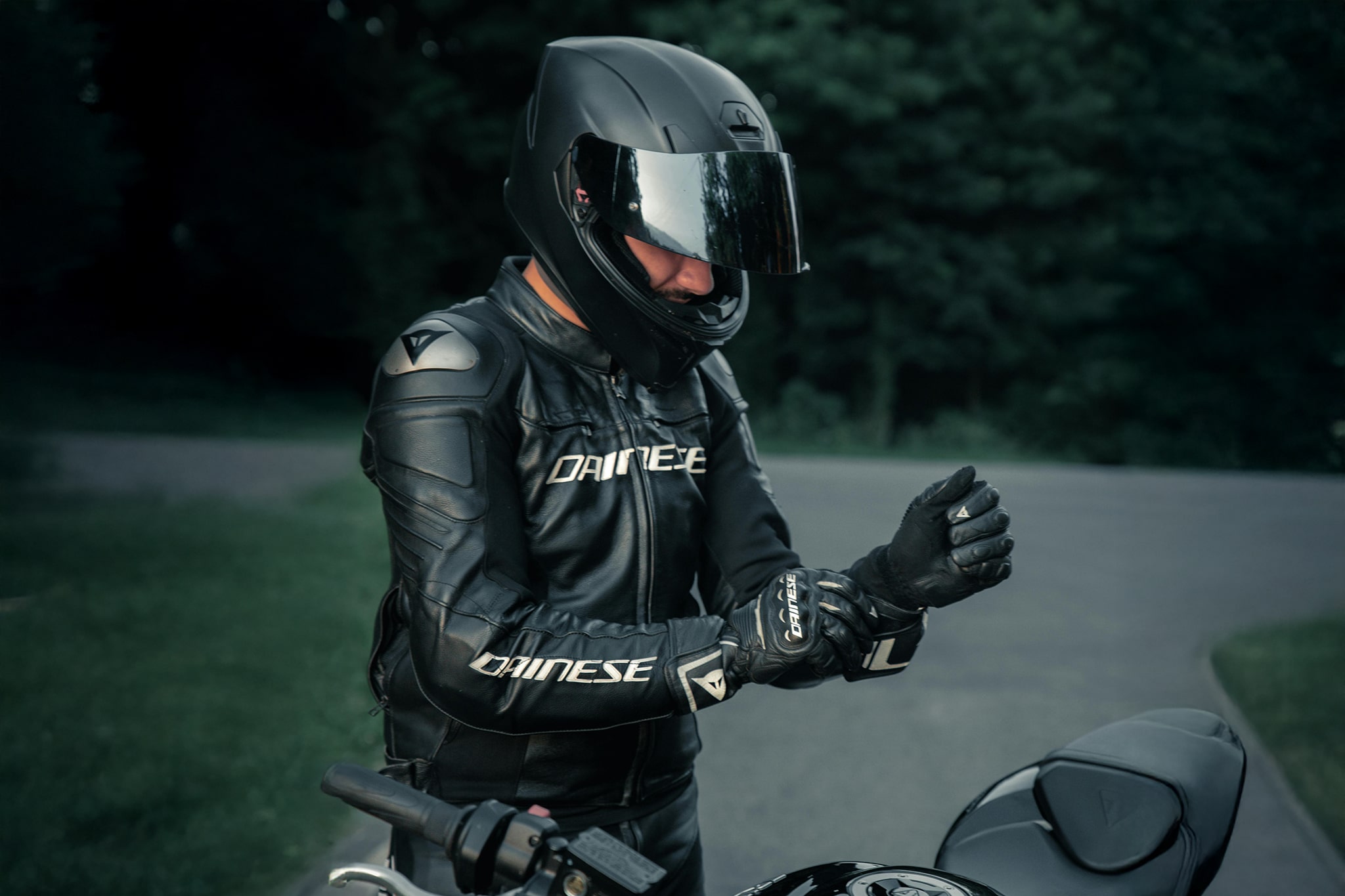Mistakes are part of every new rider’s journey. And while some lessons come with time, many common errors can be avoided with simple guidance.

Riding a motorcycle is an experience like no other. Once you’ve caught the bug, there’s no shaking it. It’s no surprise that new riders spend countless hours obsessing over the perfect bike and dreaming about the open road.
But while the thrill of motorcycling is undeniable, it’s easy to make mistakes that lead to frustration or close calls. Some lessons naturally come with time. Others are best learned the easy way.
Here are some of the most common mistakes new riders make, along with tips on how to avoid them.
Skimping on Gear
Buying a bike is one of the most exciting parts of your motorcycling journey… and usually the biggest hit to your wallet. Many new riders save for months to get their dream motorcycle, only to realize they’ve left nothing in the budget for quality gear.
Too often, beginners settle for the bare minimum required by law, which is usually just a helmet. It may seem like a money-saver, but it’s really a gamble that can cost much more down the road.
How to Avoid It: Invest in full protective gear from the start. At minimum, that means a DOT-approved helmet, a motorcycle-specific jacket (ideally with armor), full-fingered gloves with reinforced palms and knuckles, riding pants, and boots that cover your ankles.
You don’t need to have the most expensive gear on the market. There are plenty of top-quality options that are protective, comfortable, and wallet-friendly.
Overestimating Abilities
Getting your license can feel like a golden ticket to ride anywhere, anytime. Suddenly, the whole road is yours. Confidence is key, but too much of it too soon can also be a rider’s worst enemy.
Many beginner riders assume they can handle more than they’re actually capable of. That might mean hitting a tight corner too fast, jumping into rush-hour traffic and busy highways before they’re ready, or hopping on a bike that’s simply too powerful for their experience level.
How to Avoid It: Start slow. Give yourself time to build muscle memory and situational awareness. Every ride will introduce potential hazards and new challenges, so be honest about your limits and don’t feel pressured to keep up with more experienced riders in a group.
Give yourself a margin of safety between your current skill level and what you’re attempting. That extra buffer can make all the difference.
Neglecting Slow-Speed Control
Riding fast in a straight line? No problem. Making a tight U-turn in a parking lot? Not so much.
Slow-speed control is one of the most overlooked skills by new riders, yet it’s the one that will save them from embarrassing drops while parking or turning from a stop sign.
How to Avoid It: Find an empty lot and practice. Get familiar with your clutch’s friction zone and get comfortable using your clutch, rear brake, and throttle together to control your bike at low speeds. Keeping your eyes up and looking where you want to go, rather than staring down at the front wheel, will also help maintain your balance.

Looking Down Instead of Ahead
On a motorcycle, where you look tends to be where you go. Stare at the ground, and you’ll wobble and fight for balance. Keep your vision just a few feet ahead, and you’ll miss the bigger picture, like that curve coming up or a hazard in the road,
How to Avoid It: Train yourself to keep your eyes up and scan further ahead. When approaching a curve, look through the turn toward the exit point, not at the pavement in front of you, and gradually accelerate through. And when you see an obstacle, don’t lock onto it. Look for the path around it, and your bike will naturally follow your focus.
Poor Braking Technique
New riders often react impulsively in some situations, grabbing too much front brake or stomping on the rear. Both can lead to skidding or loss of control.
How to Avoid It: Practice smooth, progressive braking. Squeeze the front brake instead of yanking it, and apply steady pressure to the rear. In emergencies, brake firmly but smoothly while keeping the handlebars straight.
Ignoring Lane Positioning
Lane positioning is crucial for maintaining visibility and ensuring safety. In many situations, it’s the difference between being seen and being overlooked. New riders sometimes drift into blind spots or follow vehicles too closely, leaving themselves with little room to react.
How to Avoid It: Position yourself where you’re most visible and always give yourself options. Stay out of blind spots, keep a safe distance, and ride in a way that leaves you an escape route if traffic shifts unexpectedly.

Looking Down Instead of Ahead
On a motorcycle, where you look tends to be where you go. Stare at the ground, and you’ll wobble and fight for balance. Keep your vision just a few feet ahead, and you’ll miss the bigger picture, like that curve coming up or a hazard in the road,
How to Avoid It: Train yourself to keep your eyes up and scan further ahead. When approaching a curve, look through the turn toward the exit point, not at the pavement in front of you, and gradually accelerate through. And when you see an obstacle, don’t lock onto it. Look for the path around it, and your bike will naturally follow your focus.
Poor Braking Technique
New riders often react impulsively in some situations, grabbing too much front brake or stomping on the rear. Both can lead to skidding or loss of control.
How to Avoid It: Practice smooth, progressive braking. Squeeze the front brake instead of yanking it, and apply steady pressure to the rear. In emergencies, brake firmly but smoothly while keeping the handlebars straight.
Ignoring Lane Positioning
Lane positioning is crucial for maintaining visibility and ensuring safety. In many situations, it’s the difference between being seen and being overlooked. New riders sometimes drift into blind spots or follow vehicles too closely, leaving themselves with little room to react.
How to Avoid It: Position yourself where you’re most visible and always give yourself options. Stay out of blind spots, keep a safe distance, and ride in a way that leaves you an escape route if traffic shifts unexpectedly.
Forgetting to Check the Bike
Unlike cars, motorcycles often don’t have warning lights for every issue. That means it’s up to you to catch problems before they escalate into breakdowns or dangerous situations. Many riders assume their bike is fine if it looks okay, but a lot can hide beneath the surface.
How to Avoid It: Make a quick pre-ride inspection part of your routine. Use the acronym T-CLOCS (Tires, Control, Lights, Oil, Chassis, Stands) as a checklist. Check tire pressure, oil and coolant levels, brakes, chain tension, and make sure all lights are working properly.
Learn your bike’s fuel range too, as not every motorcycle has a fuel gauge, and keep a log for regular maintenance. It only takes a few minutes, but it saves you from running out of gas on the side of the road or blowing a tire mid-ride.
Skipping Rider Training
Learning from experience is great, but relying solely on trial and error can leave significant gaps in your skills. Skipping formal training means missing out on critical skills and safety habits that could make all the difference.
How to Avoid It: This one’s a no-brainer. Sign up for a course! The Motorcycle Safety Foundation (MSF) Basic RiderCourse is one of the best starting points, and even if you’ve already taken it during the licensing process, there are plenty of advanced options to keep your skills sharp, like the Basic RiderCourse 2 Skill Practice and Rider Skills Lab.
The United States Motorcycle Coaching Association (USMCA) is another option for learning that connects you with certified coaches for specialized training, whether that’s advanced street skills, off-road riding, or track racing.
Stalling
Every new rider has stalled their bike at some point. It’s basically a rite of passage! It can be embarrassing but you’re not alone. Stalling usually happens when clutch and throttle control aren’t smooth, especially at stoplights or in traffic.
How to Avoid It: Get comfortable with the friction zone. Practice slowly releasing the clutch while adding a bit of throttle until the bike moves smoothly. The more time you spend practicing, the quicker stalling will fade into just another memory from the early stages of your journey. And don’t sweat it too much. Even seasoned riders still stall once in a while!
Panicked Reactions
Motorcycles react to small movements, so sudden or abrupt movements can throw them off balance. When you’re nervous, it’s easy to tense up, shake the handlebars unintentionally, or make jerky corrections that make the bike unstable.
How to Avoid It: Practice is the cure. Spend time in a safe, open space (or better yet, take a training course) working on emergency braking, swerves, and other fundamentals. The more you rehearse calm, deliberate responses, the more instinctive they’ll feel when a real emergency comes along. Confidence comes with repetition.

The Road to Becoming a Better Rider
All riders make mistakes at first. What matters most is learning from them, practicing consistently, and staying open to improving. Even the most experienced riders built their skills and judgment over time.
The freedom of the open road is what draws us in, but the responsibility of riding smart is equally important. Avoiding these common mistakes won’t make you an expert overnight, but it will give you confidence, smoother rides, and a head start on lessons many riders learn the hard way.
Ride often, ride smart, and keep growing. That’s how beginners become veterans and how the adventure stays fun for a lifetime. And remember, the riding community is always here to back you up.
